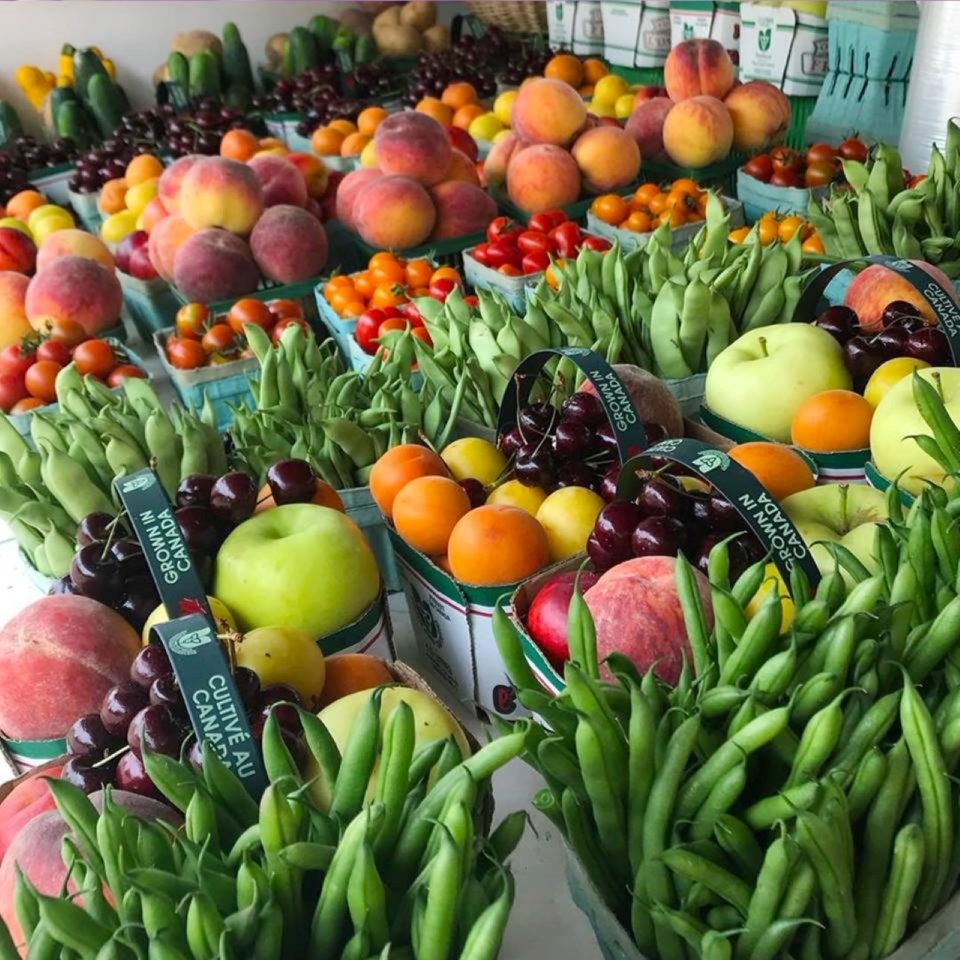It's no secret that food prices in Canada remain high, but there are ways to get more bang for your dollars. One of the best ways is to plan your meals around what is in season. Summer and fall harvest seasons offer plenty of options to save money and eat healthy.
At this time of year, there is an amazing variety of fresh fruits ripe and ready to be enjoyed, like blueberries, apples, grapes, peaches, nectarines, pears, plums, strawberries, raspberries, watermelons, and more.
There is no less variety when it comes to locally grown vegetables, from classic favourites like beans, cauliflower, carrots, peas, carrots, radishes and squash to more varied options including artichoke, bok choy, daikon radish, mustard greens, snow pea shoots, and water spinach.
Tree, field or vine-ripened, they’re packed with delicious flavour and nutrients, whether they’re eaten on their own or used as an ingredient in a favourite dish.
Whether you’re stopping at an on-farm store, visiting a farmers’ market or stocking up at the supermarket, shopping for what’s in season means plenty of supply and good value for money. Buy extra when you see a great deal and freeze, can, process or pickle produce to enjoy all year long as jams, jellies, sauces, condiments, soups, ingredients and more.
Buying local will not only help you stretch your food budget, it’s also climate-friendly and more sustainable. A shorter distance from farm to plate means fewer emissions and less food waste, and you’re supporting Ontario fruit and vegetable farmers who are using a wide range of environmentally friendly practices that support sustainable production.
This includes investments in technologies and practices that support more efficient use of water, energy and fertilizer; using tools like soil testing and cover crops; and reducing water and pesticide use.
Here are four ways to enjoy local fruits and vegetables all year long:
- Freezing – Peel, slice, and pit fruits and freeze them on a large baking sheet before transferring them into freezer bags or storage containers. Chop and blanch vegetables before freezing by boiling them briefly and cooling them quickly to improve food safety and preserve nutrients and flavour.
- Pickling – A relatively fast and easy option to preserve fruits and vegetables is to marinate them using a brine, which is a mix of salt, sugar, vinegar, water, and other spices of your choosing.
- Dehydrating – Use a dehydrator or freeze dryer to extend the shelf life of fruits and vegetables and make them convenient for on-the-go snacks or meals.
- Canning – A great but a bit more complex way to make jams, jellies, chutneys, sauces, salsas, and other condiments. Find a good recipe, and make sure to follow the directions for proper canning techniques.




